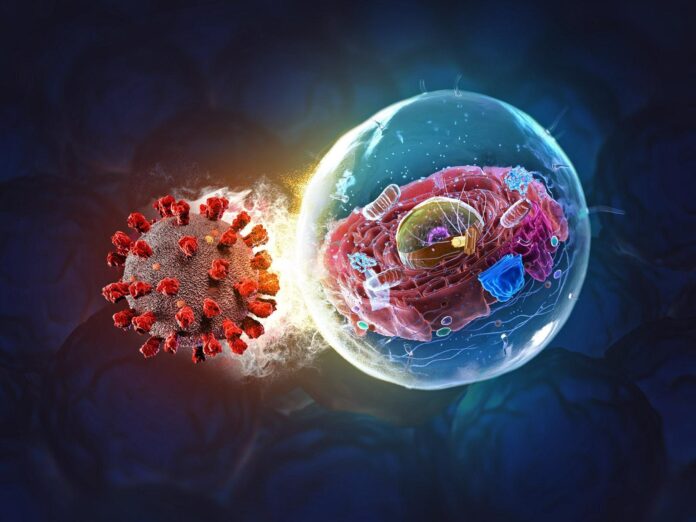University of Manchester scientists have successfully pioneered a way to create functioning human spinal disks, aiming to revolutionize our understanding of back pain and disk degeneration in a leap for medical science.
The research, led by Dr. Matthew J. Kibble used a state-of-the-art 3D printing technique called bioprinting to replicate the complex structure and environment of human spinal disks.
In a study published in the journal Acta Biomaterialia, they reveal that tissue stiffness and oxygen levels significantly impact the production of vital biological materials, including collagen and hyaluronic acid, by human disk cells.
The insights could ultimately lead to new treatments for back pain, a condition affecting hundreds of millions of people across the world.
Bioprinting is a cutting-edge technique that uses living cells and biological materials to create complex 3D structures that accurately mimic the structure of human organs.
The new bioprinted disks will allow scientists to study how different conditions affect disk cell behavior and contribute to tissue degeneration and back pain.
Most bioprinters work in a similar way to plastic 3D printers, extruding material through a nozzle under pressure to build structures.
However, rather than printing plastic, bioprinters use cells and gel-like inks made from cell-friendly materials such as collagen, cellulose or gelatin.
The scientists prepared the cells and materials needed for bioprinting and designed a digital model of a human spinal disk. For this study, the bioprinted disks were made from gels containing collagen combined with alginate, a protein derived from seaweed.
They used state-of-the-art 3D bioprinters capable of depositing multiple types of cells and materials, layer-by-layer, to create sophisticated models where the different biological, chemical, and mechanical characteristics of the human disk could be modeled.
The bioprinted tissues were then stored in controlled conditions so they could grow, mature, and develop their biological functions.
Dr. Stephen M. Richardson, from The University of Manchester, corresponding author of the study, said, “This work represents a step towards the automated creation of realistic whole organ models and brings us closer to understanding the root causes of disk degeneration.
“Our findings provide important insights into the factors driving disk degeneration and pave the way for the development of more effective regenerative therapies, for example through incorporation of stem cells.”
Bioprinting has been used to fabricate models of different tissues, including skin, brain, nerve and heart, kidney and tumor.
However, fully functional tissue-engineered organs are still decades away; current models are mostly used for investigating biological processes in the lab but may act as replacements for lab animals.
As part of his Ph.D. research at The University of Manchester, Dr. Kibble developed the bioprinted disks to explore the impact of tissue stiffness on the two cell types that inhabit different parts of the adult spinal disks: nucleus pulposus and annulus fibrosus cells.
In future disk models, the scientists plan to incorporate cells found in healthy, young developing disks, alongside stem cells or gene-edited cells to create even more advanced models of health and disease. This will enable them to understand how healthy tissue is formed and whether stem cells can be used to produce healthy tissue and treat back pain.
Dr. Kibble said, “Over 600 million people worldwide suffer from lower back pain. Our bioprinted intervertebral disk models are an exciting opportunity to inform better regenerative therapies.
“Our research has shown that tissue stiffness and oxygen levels have a significant impact on the production of vital biological materials.
“There have been many attempts to engineer disks so that we can understand their biology and develop models for testing different therapies or transplanting them into animals. But as well as being very difficult to do, this is also extremely time-consuming.
“Our work allows us to produce biologically functional disk models at scale and will allow us to make desperately needed advances in our understanding of disk disease.”
More information:
Matthew J. Kibble et al, Suspension bioprinted whole intervertebral disc analogues enable regional stiffness- and hypoxia-regulated matrix secretion by primary human nucleus pulposus and annulus fibrosus cells, Acta Biomaterialia (2025). DOI: 10.1016/j.actbio.2025.05.015
University of Manchester
Citation:
Functional bioprinted spinal disks offer new hope for understanding and treating back pain (2025, May 9)
retrieved 10 May 2025
from https://medicalxpress.com/news/2025-05-functional-bioprinted-spinal-disks-pain.html
This document is subject to copyright. Apart from any fair dealing for the purpose of private study or research, no
part may be reproduced without the written permission. The content is provided for information purposes only.

